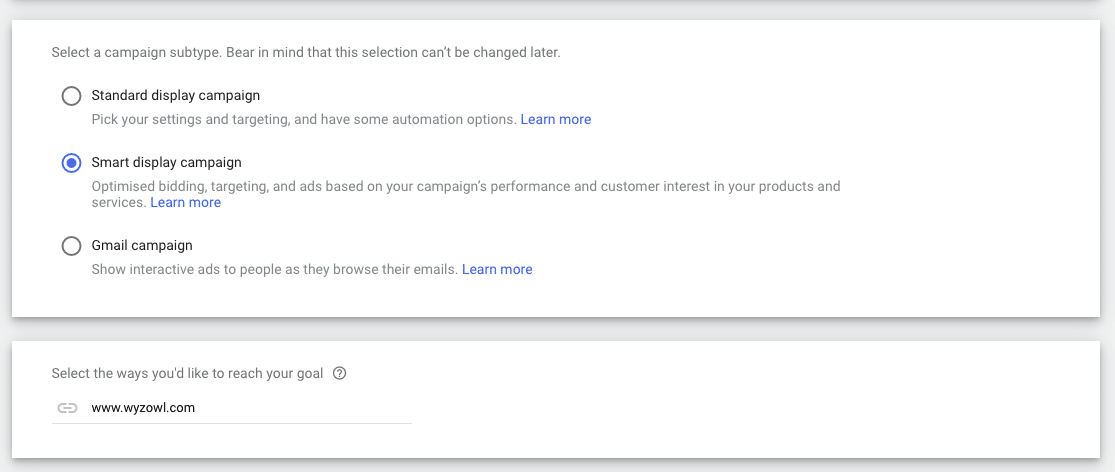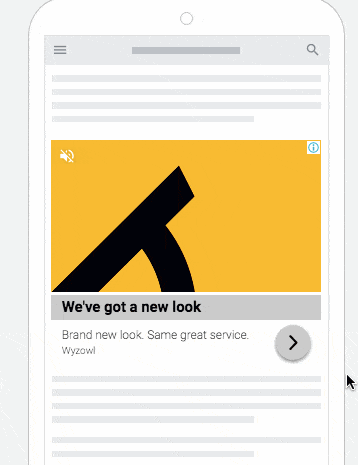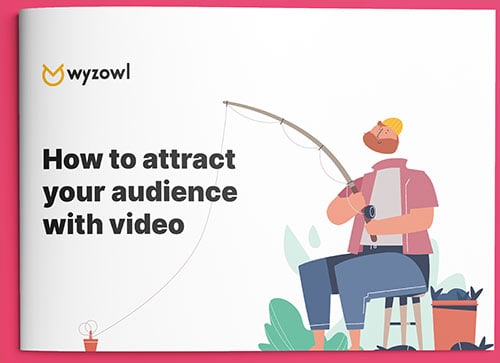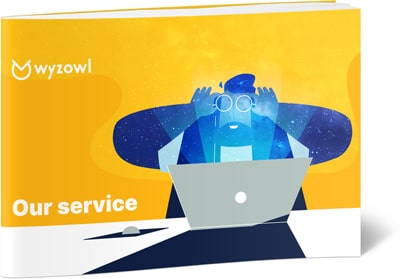Banner ads have been around for a long time. But traditional static banner ads certainly don’t have the same impact they did 25 years ago.
In 1994, the CTR for a banner ad was 44%. Today it’s as little as 0.4%, with 86% of consumers suffering with ‘banner blindness’ – a phenomenon in web usability where visitors consciously or unconsciously ignore banner-like information.
The good news in all of this is that banner blindness can now be cured – thanks to video.
In this article, we’ll teach you all about how to create video banner ads that blow viewers away…
Contents
What is a video banner ad?
A traditional banner ad is a static image, like this:

They typically appear along the side, at the bottom, or top, of a webpage.
If the web visitor is interested in what the ad is selling then they can click on in to be taken to a landing page.
Video banner ads work in the same way. The only difference is the static image is replaced with a video, like this:

Video banner ads autoplay as visitors scroll down web pages. They autoplay without sound, so as not to disrupt the user experience, but there is usually the option for the viewer to click for audio.
As video banner ads automatically play without sound, many companies opt to include subtitles in their videos so that potential viewers can still understand what’s happening. Here’s an example:

The great thing about video banner ads is that they allow you to target your ideal customers wherever they are online, instead of only when they are watching videos on YouTube or social media sites.
But that’s not the only benefit. Let’s take a look at some more…
1. Harder to ignore
There’s no denying that movement is eye-catching. If something moves, we look towards it. It’s instinctual.
This fact alone makes the video banner ad a whole lot more powerful than its predecessor, the static banner ad, because it’s very difficult to be ‘blind’ to it.
And once videos grab our attention, they’re pretty good at keeping it. This is because videos have the power to tell a story and target our emotions – whether that’s making us laugh, making us think, or tugging on our heartstrings.
2. You can take advantage of dynamic video remarketing
Remarketing allows you to show ads to people who have previously visited your website or app. Dynamic remarketing takes this one step further – by allowing you to show potential customers ads that contain products or services they clicked on when browsing your site.
Here’s an example from GoDaddy, advertising their Plus package:

With video banner ads, you can really take advantage of dynamic remarketing and ensure that potential customers see your ads wherever they are online.
3. Better performance than static banner ads
This one’s probably a given – but it’s certainly worth mentioning! While most people ignore static banner ads (sometimes without even realising they’re doing it!), people actually enjoy brand videos.
According to our recent video marketing survey, 86% of people said they would like to see more video from brands in 2020. And 66% of people said that video is their favourite way to learn about a product or service.
4. Gives users a positive choice
While traditional banners can be seen as creating a poor user experience, video banner ads create a positive one by offering what’s called a non-forced advertising proposition.
The control is given to the users. If they want to keep scrolling, they can – and the video will stop playing. If they want to listen to the sound then they choose to do so themselves, by clicking.
Video banner ads give users a number of positive choices and this, in turn, creates a positive experience.
How to create a video banner ad
It’s clear that there are many benefits to be had when it comes to video banner ads – so, how do you get started?
Well, first things first, you’ll need a video ad. If you already have a bank of video ads, then you’ll be pleased to know that you don’t need to start from scratch here. All you need to do is update your existing video file so that it meets the requirements for a video banner ad.
Video banner ad requirements
There are three types of banner video ads that you can create, each one has specific requirements. But first, let’s cover the general requirements for banner videos:
- Play time must be 4 minutes or less
- 2.2 MB total load with video
- Creative dimensions should be 300×250 (inline rectangle) or 336×280 (large rectangle)
- 4:3 aspect ratio recommended
- Minimum 14 frames-per-second (30FPS recommended)
- Audio: must be encoded at a volume less than or equal to-12 dB
And now for the video types:
- Click to play
- Autoplay with no sound, and
- Hover to play
If you want your banner video to be a click to play, you’ll need to upload an opening image and adhere to the following interaction requirements:
- Audio and video must only play upon a user’s click
- The following buttons are required: Start, Stop, and Mute
If you want your video to play when users hover it then the following interaction requirements apply:
- There must be 2 seconds of hovering before audio is initiated
- When the user stops hovering, the audio must stop.
There are no additional requirements for the Autoplay option, and this is likely the most-popular choice for video banner ads because it is the most attention-grabbing.
One more thing you’ll need to get started is a Google Adwords account. To upload your video banner ad and start using it, click ‘New Campaign’ after logging in.

Then decide on a campaign goal. Almost every goal accepts Display ads as a campaign type (which is what video banner ads are categorised as). We opted for Website Traffic:

Then select ‘Display’ as your campaign type:

And select a campaign subtype and the URL for your campaign:

From there, you’ll be asked to do all of the usual advertising stuff – budgeting, targeting, and so on! When you’ve finished that you will reach the Create Ads section.
Upload your video, and AdWords will show you exactly what it will look like on both mobile and desktop.
Mobile:

Desktop:

You can also add a variety of headlines and descriptions to mix it up and make your ad more interesting to those users who may be targeted more than once.
And there you have it!
All you need to now is enter your billing information to Google AdWords and hit launch on your campaign. Your video banner ads will start appearing to targeted web users!
Final thoughts
Banner ads have been around for over 25 years already, and with the new lease of life given to them by video, they’ll likely be around for another 25, at least!
If you want to find out more about how you can create your very own video ad, click here for more information.







